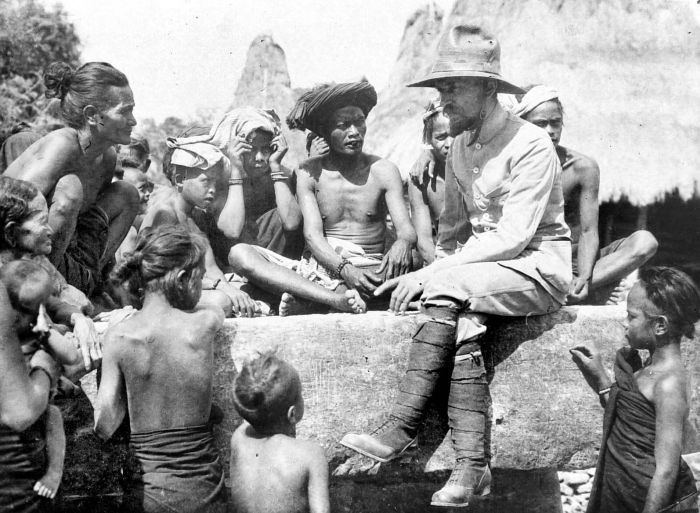 | ||
Sumba Island is inhabited by the Sumba (or Sumbese) people, and is divided by two regencies, namely West Sumba Regency and East Sumba Regency. They refer to themselves as Tau Humba. The Sumbese have been able to retain much of their culture despite foreign influences that arrived long ago on the Lesser Sunda Islands. The traditional religion of the Marapu region, which includes both ancestral worship and deity worship is still very much alive among the Sumbese society. Marapu is the philosophical center of Sumbese cultural expression and includes customary ceremonies, traditional places of worship (umaratu), traditional architecture, decorative carvings and textiles with its fashion styles such as hinggi and lau fabric, as well as its jewelry and weapons.
Contents
Mythology
There are genealogical bonds between the Sumbese and those of the Sawu Island. According to a myth of origin, they come from two ancestors, Hawu Meha and Humba Meha. Hawu Meha gave birth to the Sawunese who initially lived in Sumba Island but later migrated to the small Sawu Island. The offspring of Humba Meha remained in Sumba.
Culture
The social strata in East Sumba Regency among the nobles (maramba), prists (kabisu) and the common folk (ata) still exists although it is not observed as strictly as in the past and outwardly it is no longer obviously seen in the physical appearance and the dress of a person. Today differences in attire indicate different levels of importance during events such as traditional celebrations, weddings and death ceremonies, where components of the attire that is used are newly made, while old or worn out clothing is usually used at home or for daily work.
The most important part of the traditional attire of Sumba is located on the body cover in the form of large sheets of hinggi fabric for men and lau fabric for women. From the hinggi and lau fabrics which is made by weaving techniques and its application of muti and hada are revealed as various symbols in the social and economic context.
Pasola is the cultural feast of the Sumba people and is considered one of Indonesia's cultural richness, which is very rare and unique to the Sumba people. In West Sumba Regency, people come from far away just to watch the pasola, a competition whereby two teams compete in throwing blunted spears at each other.
Traditional women's attire
Festivals and ceremonial female attires of the Eastern Sumbese always involves a choice of several fabrics which are named according to style of the weaving techniques such as kaworu lau, lau pahudu, lau lau mutikau and pahudu kiku. Fabrics are used as sarong covering up to the chest (lau pahudu kiku) and shoulders covered (taba huku) with the same color as the sarong. The head dress is decorated with plain-colored tiara that comes with hiduhai or hi kara. Above the forehead is pinned with metal jewelry such as gold or gilding which called maraga. While the ear are decorated with mamuli jewelry in the form of golden necklaces are also used on the neck and dangles right up to the chest.
